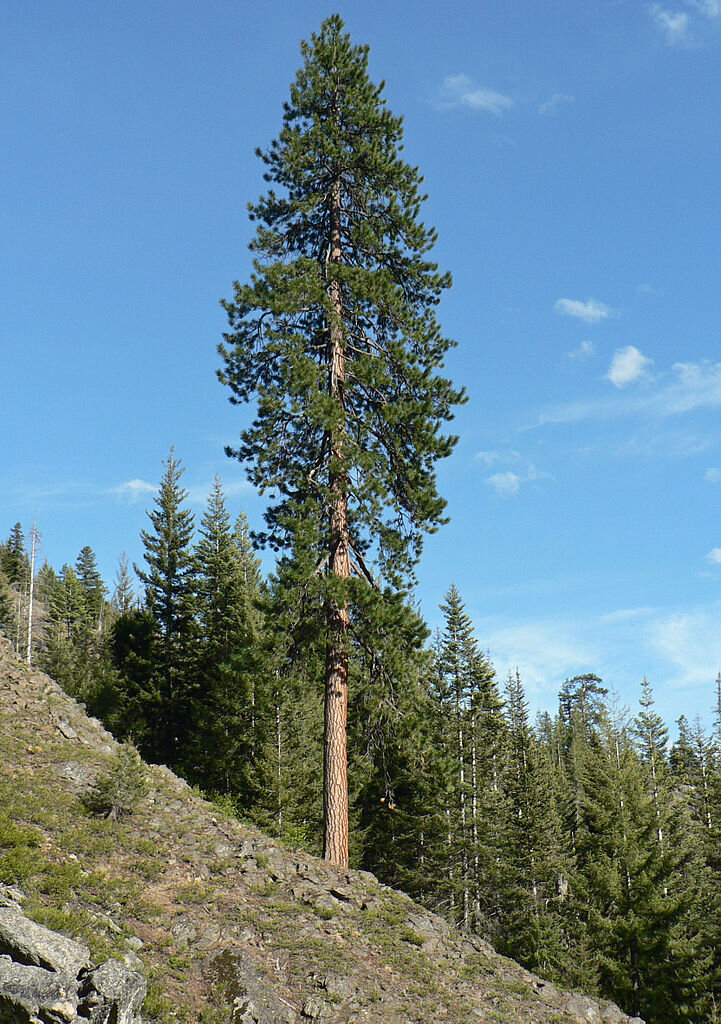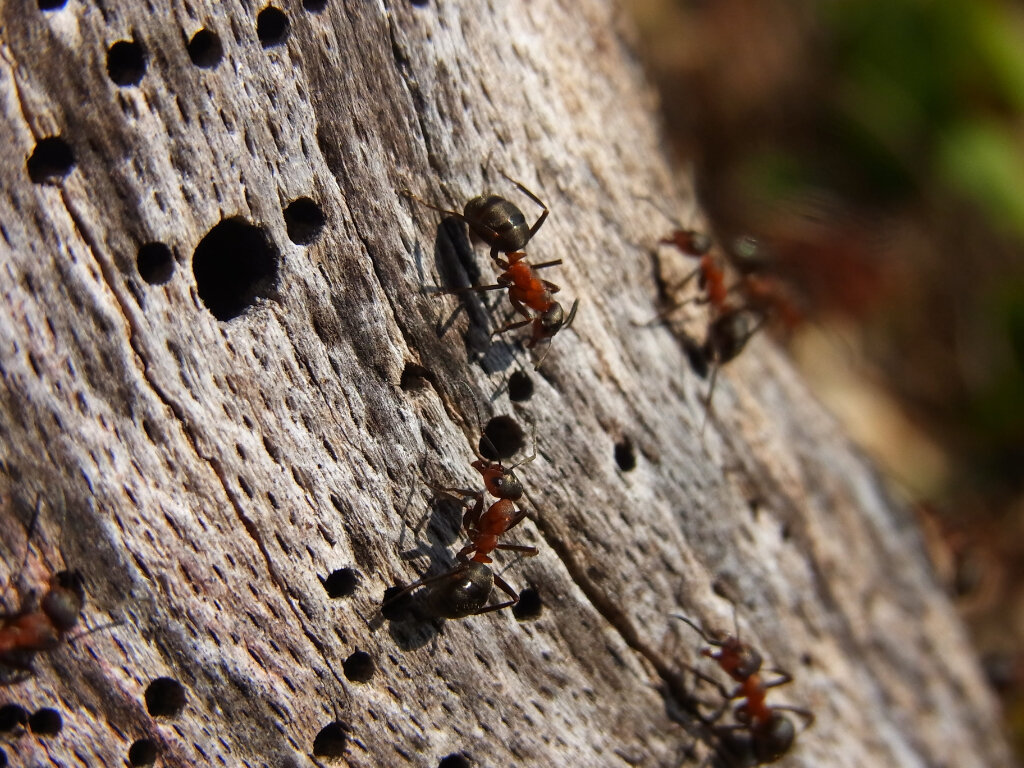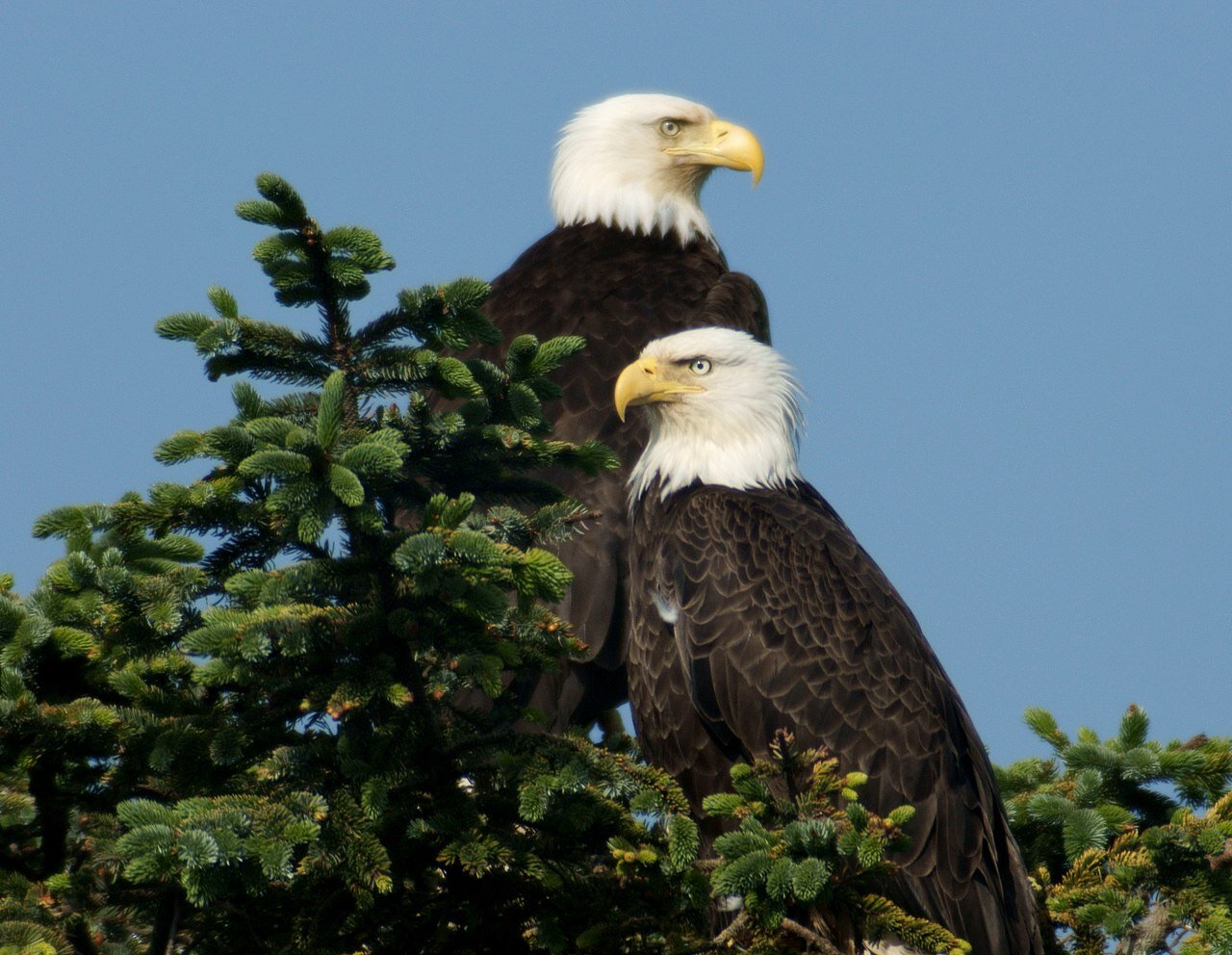
Black Cottonwood
Black cottonwood trees can reach 100 feet tall with trunks up to 6 feet around. They grow in riparian areas (near streams and rivers), where they provide food and cover for many ground-dwelling animals including deer, elk, and beaver. They also provide habitat for many birds and climbing mammals, both in their leafy crowns and in holes in the tree's trunks. These cavities can be caused by the tree beginning to rot, or they can be created by woodpeckers searching for insects or creating a nest.
Photo by Walter Siegmund, CC BY-SA 3.0

Pileated Woodpecker
Pileated Woodpeckers are large birds that mostly eat carpenter ants, which they find in snags and logs by using their strong beak to hammer at the decaying wood. They also carry fungi to these dead trees, which helps the decomposition process. These birds are important primary excavators: when they move out of the home they built, other species of birds and mammals often move in.
Photo from Pixabay

Ponderosa Pine
Ponderosa pine trees are among the tallest in the floodplain forest, reaching heights of over 100 feet. These conifer (cone-bearing) trees have thick bark, which helps make them resistant to low-intensity fires. When ponderosa pine trees die, sometimes they remain standing as snags, which are important homes for many species of insects, birds, and mammals. When they fall over, the logs offer habitat for ground-dwelling insects, mammals, reptiles, and amphibians as they decompose.
Photo by Walter Siegmund, CC BY-SA 3.0

Carpenter Ants
Carpenter ants use their strong mandibles (jaws) to create nests by chewing tunnels and holes in dead, damp wood. As they make these homes, the ants speed up decomposition of the dead tree by breaking the wood into much smaller parts like woodchips and sawdust. However, the ants do not eat the wood: instead, they search for dead insects to eat. Carpenter ants are Pileated Woodpeckers' favorite food!
Photo from Pikrepo

Bald Eagle
Bald Eagles build huge nests at the top of tall trees like ponderosa pine, where they can have a wide view of their surroundings. Most of their diet is fish like salmon and herring, but they're not picky eaters: they will also eat birds, reptiles, mammals, and amphibians. They even eat carrion (dead animals) left behind by other carnivores.
Photo by Ron Sterling, CC BY 4.0

Black Bear
Black bears are among the largest wild animals in Oregon. To prepare for winter hibernation, they eat extra food to put on a layer of insulating fat. One of their food sources is salmon, which they catch in the river and sloughs. The bears carry the fish up into the floodplain forest, where the fish's remains decompose into soil and provide rich nutrients to plants. They also eat insects and grubs in addition to lily bulbs and other plants.
Photo from Pikrepo

Humboldt's Flying Squirrel
Humboldt's flying squirrels can't really fly. Instead, they glide, directing their movement with a membrane of skin between their front and back legs as they travel between trees up to 150 feet apart. These mammals are omnivores: they eat plants, fungi, and tree sap in addition to insects and bird eggs. They move into cavities left behind by Pileated Woodpeckers, lining the nests with lichen.
Photo by Cephas, CC BY-SA 4.0

Great Horned Owl
Great Horned Owls often nest in trees like cottonwood or ponderosa pine, but instead of building their own nest, they move into abandoned nests built by other species. These owls do most of their hunting at night, and they eat a huge range of prey, including mammals like rabbits and squirrels, birds as small as starlings and as big as geese, and insects, reptiles, and fish.
Photo from Pikist















